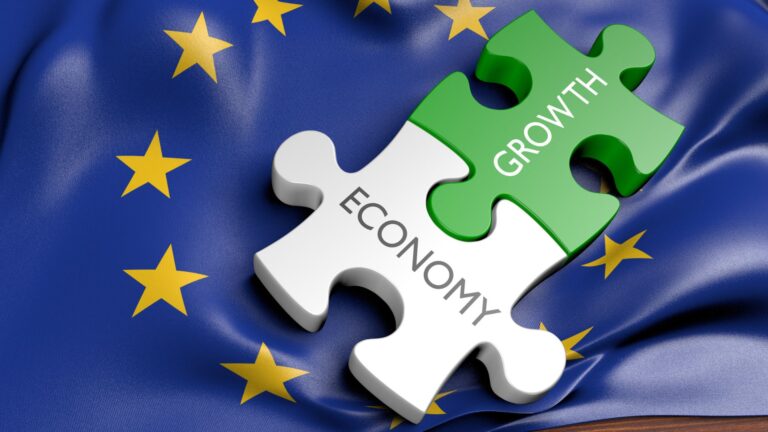
The European debate on the new Stability and Growth Pact invests several European and global challenges at the same time. Each of these will have consequences for the others. And also for the balance of power between the “European government” and the member states.
Over the past few years an impressive series of events has hit Europe (and the whole world). After the global financial crisis of 2007-2009 and the European sovereign debt crisis of the first half of the 2010s, COVID struck at the end of 2019. Then came Russia’s invasion of Ukraine. And after that, the energy crisis and soaring inflation. Additionally, all this happened as a new structural scenario is emerging: the environmental crisis that forces a global response; and contradictory thrusts for the search of a new world order brought about by the decline of US leadership and the emergence of new powers (China, India and others); in fact, we are facing an alternative between renewed international cooperation with shared global rules and the clash between superpowers for the global hegemony. It is not surprising that all this is prompting a rethinking of the European economic architecture. A first, historical, response has already come in the form of the Next Generation EU (NGEU), the post-pandemic Recovery Plan financed with debt jointly guaranteed by member states.
And now two other fundamental topics are up for discussion: the revision of the Stability and Growth Pact (SGP); and the development of a new European industrial policy. Put together, these areas of intervention promise to reshape the global EU economic governance.
The European Commission itself recognised that the current version of the SGP doesn’t fit the modern world. When the pandemic struck, the general escape clause of the SGP was activated, allowing member states to react to the COVID-19 crisis by providing sizable fiscal support to their economies; this strong countercyclical response proved highly effective in mitigating the economic and social damage of the crisis. The NGEU was then set up to help the various European economies to recover and to shift towards a greener and more digitised future. At the same time, the crisis resulted in a significant increase in public debt ratios, highlighting the importance of reducing them to prudent levels; indeed, fiscal prudence in times of sustained growth helps build fiscal buffers that governments can use to provide countercyclical fiscal support in times of crisis.
The time has thus come for a comprehensive reform of the SGP. The current set of rules is based on the famous Maastricht’s thresholds: a country’s debt to GDP ratio and annual deficit to GDP ratio cannot exceed, respectively, 60 per cent and 3 per cent. If the government debt is beyond such a limit, the country is required to lower its excess over the 60 per cent limit by one twentieth each year. This reduction plan, which constitutes the “corrective arm” prescribed by the SGP, is objectively too rigid since it doesn’t take into account the specific economic conditions of the country under examination. The same argument holds for the general set up of the current rules.
The reform proposed by the Commission is aimed at relaxing these parameters and, at the same time, at politically engaging the member states. Essentially, it is based on a multi-year approach. In a first moment the member states would be classified in different risk categories in accordance with a debt sustainability analysis. The Commission would then propose a reference multiannual adjustment path to the countries with substantial and moderate fiscal challenges based on the net primary expenditure, i.e. the expenditure under the direct control of the governments. The goal of the plan is to bring the public debt on a plausible and continuously declining path at the end of the 4-year period.
At this point, the member states can present a counter-proposal. It has to include a detailed description of reforms, public investments and fiscal adjustments needed to put the debt on a declining trajectory; the involved government may also request an extension of the adjustment period for three more years. Finally, the European Council would be in charge of approving or rejecting the country’s proposed plan. If rejected, and in case of no agreement between the Commission and the member state, the adjustment path initially proposed by the Commission would automatically become the reference plan. From a governance perspective, this process would increase the federal power of the Commission which supervises and coordinates the national economic plans, thus promoting converging growth and stabilisation paths and, in turn, favouring the integrity of the entire system.
The reform proposed by the Commission represents an important step in the right direction both from a purely economic point of view and for its political implications. First of all, it is based on the net primary expenditure which, as said, represents the costs under the direct control of the governments. This ensures that the country, in carrying out its adjustment path, is shielded from variables like interest rates movements (which can be due to speculative market swings or to monetary policy interventions) or higher automatic stabilisers (like unemployment and social benefits). This gives the government enough room to implement the plan independently and to focus on the actions under its direct control. Furthermore, several economists have argued in favour of stabilising the public debt by focusing on the net primary expenditure: the public debt does converge towards a steady level if the net primary expenditure is under control, provided that the economy enjoys a certain level of growth.
Another relevant merit of the proposed reform is the multi-year approach. This allows for medium and long-term planning, which is the proper time horizon in terms of public finance sustainability. The government is given a good timespan to manage the level of spending according to the chosen fiscal policy. In particular, the duration of the plan may coincide with the government term, which means it is not forced into a short term rush but it has the opportunity to manage its economic policy throughout the whole legislature. This is first of all a sound economic principle on its own. And secondly, this translates into a political stimulus: making more stable governments, a challenge particularly important for several European countries unfortunately accustomed to short-lived governments (like Italy for example).
At the same time, member states are more actively involved in the process. While in the old system they were asked to curb spending in a rigid way, now they work together with the European institutions. This method gives them full political responsibility for the actions undertaken, covering a period of several years. The Commission’s objective is therefore twofold: giving more flexibility on the economic front and more stability and responsibility on the political one.
Not only stability
Ursula von der Leyen has recently announced that the Commission will propose a new EU Sovereignty Fund next summer to support European industry’s green and digital transition. The project is at a very early phase; indeed, there is not a formal proposal yet. Nevertheless, the final objectives of the initiative are already clear: helping the economic growth with structural interventions and launching what has been defined as “strategic autonomy” i.e. a new European industrial policy. Several political leaders and pundits have already been arguing in favour of such initiatives for a long time. Then, the disruptions created by the pandemic and later by the war and energy crisis have made clear that a European intervention in this direction is really needed. Lastly, the political pressure to act has mounted as President Biden signed into law the Inflation Reduction Act (IRA) with its “made in America” subsidies.
The Commission is determined to accommodate the transition and to make the European economies more resilient. It is urging the member states to shorten permitting times for green projects, to ease redtapes and to retrain workers with the new skills required. It has spoken out in favour of signing long-term agreements with countries that supply crucial raw materials in order to reduce dependence on single suppliers. Investments throughout the entire supply chain will be proposed.
However, as we are still at a very early stage, the details of the interventions are still to be defined. A first crucial point will regard financing. The most obvious choice would be the emission of Eurobonds, as already done for the Next Generation EU. This would allow the set-up of a Sovereignty Fund with enough scope to act decisively. It would also boost the creation of the capital market union and provide financial markets with more risk-free euro denominated securities. Hopefully, the likely resistance from Central and Northern European countries will be overcome (resistance that, of course, should be overcome thanks to the good usage of the funds received under the NGEU; it is reasonable, compelling indeed, to verify how the current resources are used before adding more common debt). Other, less preferable, alternatives might be direct contributions from member states or involving the European Investment Bank (EIB).
Possibly still more important will be the decisions made in terms of European industrial policy. In doing so, the EU absolutely needs to maintain the market-based approach it has always embraced. Responding to the American IRA with an indiscriminate subsidy race would make everyone worse off; on the contrary, the integration of the single market and the openness Europe has had towards the rest of the world have served the continent remarkably well. As of now, European leaders fear jobs and investments may move to America; but they also need to consider that Europe has a large, functioning and growing green industry, thus it is far-fetched for firms to abandon Europe massively. Better to use the Sovereignty Fund to invest in public infrastructures, build electricity grids, invest in renewables. Europe needs huge structural investments which cannot be sustained only by privates; that’s where the public pot should go. Of course, targeting help towards the poorer would be sensible, which is different from the sort of handouts for everyone approach some governments have pursued.
Making the EU economy more resilient will need a mix of “strategic autonomy” and diversification. The production of some essential goods might be internalised; at the same time, diversifying the supply chain will be important. Again, this is the job of a vigorous trade policy, on which the EU excels.
In short, in pursuing its industrial policy, the EU needs to build on its strengths: strong internal market, limits on subsidies, openness, multilateralism. It is worth noting that this approach makes sense from an economic point of view but also from a political one. The EU is a champion in international cooperation and often stands as a “normative power”, setting global standards for others to follow. War has erupted on European soil and geopolitical tensions are high almost everywhere. The EU is a landmark for multilateralism and should continue to act as such. Implementing a common European industrial policy is essential for the EU to thrive; at the same time, it must do it by remembering its strengths and, most of all, its ideals. The Commission has hinted into this direction; hopefully the process will follow this lead, preparing the ground for a bigger Europe into a cooperative world.
Combining stability and growth
Global public debts ballooned over the last decades. A first considerable surge happened because of the financial crisis of 2007-09. When COVID-19 struck, governments in rich countries spent freely to support their economies. They were right: they learnt from the previous crisis when public response had been too timid in helping the economies out of recession. Fiscal largess has been favoured by central banks which slashed interest rates and bought huge amounts of longer dated government bonds via their Quantitative Easing (QE) programmes. But now governments face two major problems. The first one is that it is difficult to reverse public spending. Once a bonus or tax relief has been introduced, it is politically tricky to remove it; moreover, after some time of big public support, people now come to expect the government to do the same when the next crisis hits. This is another reason to refrain from a costly subsidy race, preferring instead the sort of carbon pricing scheme the EU has successfully implemented.
The second problem is that interest rates have now been increased by central banks in the attempt to tame inflation: they reached 5-5.25% in the US, 3.25% in the Eurozone and 4.50% in the UK; only Japan has still a loose monetary stance but even there pressures to start tightening are mounting as inflation is approaching an uncomfortably high level. Costs for interest are then climbing and, as a consequence, debt levels risk becoming unmanageable.
Against this backdrop, it is important to consider the double objective the European Commission is aiming for. On the one hand, the reform of the SGP wants to lower government debt in a gradual but credible manner. This is particularly relevant at a time when several factors promise to keep pressures on already strained government budgets for a long time: the green transformation of the economy, more defence spending, the reconstruction of Ukraine, increasing health care costs linked to ageing population. On the other hand, the European industrial policy wants to create the structural conditions to help the economy grow and make it more resilient; combining growth with fiscal prudence is indeed essential for stability itself. Besides, contrary to many European governments, the Commission has fiscal space to act properly, which is why it would be reasonable to finance the Sovereignty Fund with European resources.
The process for reforming the SGP and setting up the European industrial policy has just begun. With the various legislative steps the European Parliament, Council and member states will surely have the possibility to improve the initial proposals of the Commission and make them as suitable as possible. However, at the present time, it is relevant to highlight that the direction indicated by the Commission is the right one: fiscal rules must be reintroduced as the shocks from COVID and the energy crisis give way to ordinary conditions; such rules need to be reviewed in a more flexible and, as a consequence, credible way; additionally, European intervention is needed to spur growth and accommodate the economy towards the new normal, through a bigger and sustainable EU budget.


